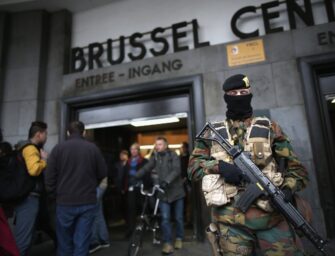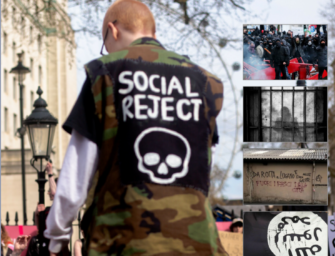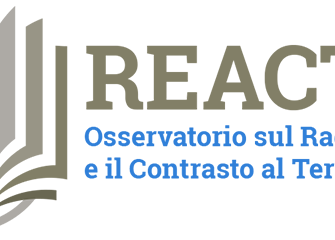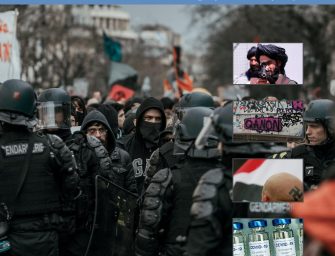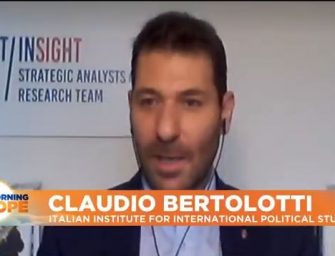#ReaCT2022: 3rd Report on Radicalization and Terrorism
Director’s introduction: The new terrorism among pandemic, social unrest and jihadist extremism
In my role as ReaCT’s Executive Director, I am pleased to introduce #ReaCT2022, the 3rd Report on Radicalisation and Counter-Terrorism in Europe (go to #ReaCT2022, n.3 year 3).
In their assessments, the
authors who submitted their work for this issue took into account the
repercussions of new social and conflict dynamics brought about by COVID-19 and
also the effects of the Taliban victory in Afghanistan.
COVID and the Taliban drive diverse terrorist
threats
Terrorism adapts,
evolves and is affected by events which ignite violent actions in the name of
an ideology that justifies its methods, aims and purposes. Trends recorded in 2021
are coherent with the dynamics of the past few years; they also anticipate a likely
scenario for 2022, a year that will continue to be shaped by
two major developments: the
Covid-19 pandemic and the Taliban takeover of Afghanistan. These two
developments, in different ways, contribute to an increasingly threatening
landscape.On the one hand, the social consequences of the Covid-19
pandemic will increase heterogeneous radical phenomena and bolster violence
linked to conspiracy or ideologically-driven extremist movements; on the other
hand, the Taliban’s victory in Afghanistan represents a leitmotif within the
global jihadist narrative.
The terrorism landscape we face in 2022
Most data
presented in this paper are drawn from START InSight’s database, which provides
annual trends in jihadist terrorism and events in Europe.
In more general
terms, the West is currently looking with concern at jihadist exaltation, from
Afghanistan to Africa. The Islamic State no longer has the strength to dispatch
terrorists to Europe as the loss of territory, financial strenght and recruits
greatly reduced its operational capability. However, the threat remains
significant due to the availability and action of lone actors and self-starters
without a link to the organisation yet mobilised by jihadist narratives around
global events. Risks connected to emulative attacks are high; 56% of the events
in 2021 can be categorised as emulative actions, according to START InSight’s
database. This trend is growing. Over the past three years, from a quantitative
point of view, the frequency of terrorist attacks has remained linear. Europol
attributes 43% of the attacks to radical left-wing movements, 24% to separatist
and ethno-nationalist groups, 7% to far-right groups, while 26% are jihadist
actions. While jihadist violence might be marginal in absolute terms, it
continues to be most relevant in terms of its consequences and the number of
victims. The number of jihadist events which took place in Europe in 2021
stands at 18 (START InSight).
Two decades of terrorism trials in Switzerland
Although
Switzerland has not experienced a large-scale attack of the kind experienced in
other European countries over the last decade, the phenomenon of
politico-ideological violence in the jihadist spectrum is nevertheless present.
Ahmed Ajil explains that from 2004 until November 2021, the Swiss
Federal Criminal Court has tried a total of 17 criminal proceedings related to
jihadist terrorism cases. Most of these proceedings took place after the
outbreak of the Syrian civil war and the subsequent territorial expansion of the
IS group in June 2014.
The African challenge
As highlighted
by Enrico Casini and Luciano Pollichieni, since the early 2000s,
a growing number of jihadist organizations emerged in Africa. They are
characterised by a globalist rhetoric but remain deeply connected to local
dynamics (political, ethnic, or criminal) and they are also increasingly
involved in illicit traffics of different types and shapes (from smuggling to
human trafficking and slavery to maritime piracy). In virtue of its contiguity
with the Mediterranean, instability generated by terrorist groups in Africa has
an immediate effect on Europe, as demonstrated by the various migration crises
of the last years.
Jihadist communities online expand the terrorism universe
by forming new entities
We asked Michael Krona, a media scholar
researching salafi-jihadist propaganda, to provide us with his take on the
dynamics of jihadist online communities; he underlines how communities that
were previously started as direct extensions of a specific organization (like
the Islamic State – IS) increasingly become intertwined with broader
ideological strains, rather than only relaying official IS propaganda.
Supporter groups online are expanding the terrorism universe by forming new
entities.
The new horizons of radicalisation
Two decades since
the 9/11 attacks and in pandemic times, the threat of terrorism has become more
widespread, fragmented and complex to deal with. Chiara Sulmoni writes that the ecosystem of violent extremism is
characterized by strong competition, but also by a growing exposure to the
strategies and narratives of different groups. New profiles underline the
domestic character of the threat and indicate how terrorists and individuals
who radicalise frequently have a history of mental distress and exhibit a
propensity for violence rather than ideological conviction. As society itself
is becoming increasingly polarized and extremism finds its way into the
mainstream, there’s a need for renewed attention on the sociological and
psychological aspects inherent to radicalisation processes, with a view to
enhancing prevention.
The EU supports the Western Balkans with a new project
on prevention of radicalisation
With reference to the Western Balkan area, Matteo
Bressan explains how prevention of radicalisation leading to violent
extremism and terrorism represents a key priority for EU Member States and
Western Balkan partners. As common challenges require a common approach, the
Commission will support the region in preventing and countering all forms of
radicalisation. The Commission will mobilise practitioners’ expertise within
the Radicalisation Awareness Network (RAN) to support prevention work and
facilitate exchanges among professionals.
Dealing with radicalised minors: the Italian approach
Minors are among
the targets of jihadist propaganda and extremist ideologies more in general.
They can be involved in different ways: as unaware victims of adults’ choices
or as direct recipients of an ideology which exploits their need to belong. In
her case study, Alessandra Lanzetti illustrates how the State Police’s Central Directorate of the
Prevention Police (DCPP) gained experience in this field and how it developed
an experimental intervention protocol on child returnees, based on the criteria
of timeliness and multidisciplinarity.
New radicalisms and other terrorisms fueled by the
pandemic effects. Far right, radical left, anti-Semitism: from conspiracy to
violence
Mattia Caniglia
explains how one of the most worrying trends in 2021 has been the increasing
attraction exercised by right-wing violent extremism on young people. This is
probably linked to the fact that right-wing extremist propaganda is mainly
disseminated online, and gaming platforms have been increasingly used to spread
extremist and terrorist narratives. Evidence from investigations and research activities
that emerged over the past year suggests that, in some instances, RWVE seek to
emulate jihadists with respect to recruitment techniques, modi operandi
and propaganda strategies. Furthermore, high-profile terrorist attacks –
whether Islamist or far-right in nature – can increase reciprocal
radicalization processes, where neo-Nazis and jihadists attempt to
“up the ante” by increasing the frequency and lethality of attacks.
Within this
context, there’s also a growth in anti-Semitic sentiment; Sarah Ibrahimi
Zijno discusses the extreme and easy propagation of substantially
anti-Semitic points of view, first within the American alternative right and
later also within the alternative European right, with particular reference to
the former communist part of the continent; as well as the substantial
rapprochement of some left-oriented press towards the same conspiracy algorithm
already of the alternative right, with the silent, progressive abandonment of
the distinction – already fragile and questionable in itself – between
anti-Zionism and anti-Semitism.
Conspiracy
theories from pop culture to violent militancy: the NoVax paradox
Andrea Molle
explains how the NoVax movement is now spearheading the rise of militant
conspiracy and rapidly replacing religious radicalism as the primary concern
for national security. His paper analyzes some of its essential traits,
highlighting the risk of mass radicalization it carries.
Updating
Terrorism Risk Assessment Instruments
In
recent years, with the advance in Europe and the United States of more or less
organised forms of extreme right-wing extremism and white supremacism, notes Barbara
Lucini, the Terrorism Risk
Assessment Instruments
(TRA-I) have been the subject of renewed reflection with
respect to their adaptive capacity, resilience and effective assessment of the
multiple and varied paths of radicalisation that are being witnessed.
Neo-Nazi
extremism and deradicalisation
The case study presented by Luca Guglielminetti is the first in Italy that concerns a so-called
deradicalization activity aimed at a boy involved in subversive activities of
the neo-Nazi far right. The path undertaken was born in the framework of a
European project “Exit Europe”, which involved partners from 5
countries with a view to integrating P/CVE interventions.
Future wars: the new centrality of
intelligence and the redefinition of cyberspace
In this
analysis, Marco Lombardi shares his reflections on some emerging aspects
of warfare, intelligence and the role of terrorism. The scenario of
the future war seems to underline the maintenance, indeed the strengthening of
the operating methods of terrorism in recent years, which has found its success
for the ability to penetrate media communication and for the innovative (ie
surprising) use of technologies. It almost seems that the terrorism
of the first twenty years of the new century has experienced the new
opportunities of warfare, which then consolidated into widespread practices
among all the actors in the conflict.
And
finally, Andrea Carteny and Elena Tosti Di Stefano reviewed for
us a recent publication –Understanding
radicalisation, terrorism and de-radicalisation. Historical, socio-political
and educational perspectives from Algeria, Azerbaijan and Italy – which
collectively presents the results of an intense and fruitful two-year research
activity carried out within the project PRaNet – Prevention of Radicalisation
Network (2019-2021).
Thanks to all the Authors who have contributed to the
current #ReaCT2022 Report. My gratitude goes in particular to the Editor,
Chiara Sulmoni, START InSight’s President, for her fundamental and special
input.
Index
Claudio Bertolotti (ENG), Director’s introduction: The new terrorism among pandemic, social unrest and jihadist extremism
Claudio Bertolotti (ENG), New Insurrectional Terrorism ignites individual terrorism in Europe
Ahmed Ajil (ENG), Two decades of terrorism trials: an overview of the cases tried by the Swiss Federal Criminal Court since 9/11
Claudio Bertolotti (ENG), Afghanistan, Syria and the Sahel: the ‘New Insurrectional Terrorism’ (NIT) takes root. A revolutionary, subversive and utopian phenomenon looks to the West
Enrico Casini, Luciano Pollichieni (ENG), Caliphs, trafficking, and discontent: convergences and perspectives of jihadist terrorism in Sub-Saharan Africa
Michael Krona (ENG), Jihadist communities online build their own brands and expand the terrorism-universe by forming new entities
Chiara Sulmoni (ENG), The new horizons of radicalization
Alessandra Lanzetti (ENG), Case study – Radicalised minors: the Italian model, between security protection and social reintegration
Matteo Bressan (ENG), The EU supports Western Balkans with a new project on prevention of radicalization
Barbara Lucini (ENG), TRA-I and radicalisation processes: current considerations and future prospects
Mattia Caniglia (ENG), Right-wing violent extremism in 2021: a rising threat across Europe?
Sarah Ibrahimi Zijno (ENG), New anti-Semitism: main factors and trends after the pandemic
Luca Guglielminetti (ENG), Case study – Neo-Nazi extremism and deradicalisation: the first case study in Italy
Andrea Molle (ENG), Conspiracy theories from pop culture to violent militancy: the NoVax paradox
Marco Lombardi (ENG), Future wars: the new centrality of intelligence and the redefinition of cyberspace
Andrea Carteny, Elena Tosti Di Stefano (ENG), Review – Understanding radicalisation, terrorism and de-radicalisation. Historical, socio-political and educational perspectives from Algeria, Azerbaijan and Italy, M. Brunelli (edited by).
Risk analysis of militant conspiracy theories
BY ANDREA MOLLE
This analysis was originally disseminated by ASIS Italy Chapter
DOWNLOAD PDF
As much as they sound silly and preposterous, militant conspiracy theories are not a joke and pose an increasing security risk instead. This is mainly due to the ease of diffusion in political systems; their tendency to provoke civil unrest; and the alarming association with far-right terrorist movements with which they share a cell-styled organizational structure.
The infiltration of militant conspiracy theorists in American society is now considered by several analysts so pervasive that it is starting to heavily influence the country’s political environment. Several groups which are operating at the moment have displayed an outstanding ability to mass-proselytize, especially among law enforcement, the military, and, more recently, politicians. In Europe, militant conspiracy theory is a relatively recent phenomenon that currently does not exhibit the same degree of institutional penetration one can find in the US. However, over the past three years, it has shown considerable potential for radicalization. Historically, militant conspiracy theories -which differ from the simple act of consuming conspiracy theories per se- owe much of their traction to the American Alt-Right movement, forerun by social media phenomena such as InfoWars launched in 1999 by Alex Jones. The Alt-Right movement dates back to approximately 2009 when it emerged from the Tea Party platform following the last Great Recession of 2007/08. However, it must be borne in mind that it is with the presidential elections in 2016 that militant conspiracy theorists blossomed and begun to take over on a global scale. Thanks to the QAnon movement and the commitment of essential influencers such as Steve Bannon, it now raises serious concerns due to the violence embraced by many followers. The dangers posed by militant conspiracy theory mainly lie on three primary levels.
First of all, their increased influence on politics. Several social movements and think tanks, those that have always mobilized voters in favour of right-wing parties in the identitarian milieu, have amplified the messages of militant conspiracy theories and, in some cases, have taken on the role of promoters. To gain consensus, mainstream parties have immediately picked up those very same issues and disseminated them, primarily through social media. It almost always happens because conspiracy theories’ simplistic rhetoric offers a great communicational advantage and translates into an immediate return in terms of consensus. However, in doing so, even without espousing conspiracy theories, these parties expose themselves to the risk of associating with a perilous movement and political culture. Above all, the primary risk consists in being infiltrated at the top by militant conspiracy theorists, thus increasing the possibility that future policy-making will be fictitious and based on faulty assumptions. Moreover, there is also the danger of possible connivance with hostile foreign powers that could exploit militant conspiracy theories as a tool of aggressive foreign policy (such as already happens with memetic warfare).
Second, the progressive level of civil unrest. In North America, the US, and Canada, the increased violence linked to militant conspiracy theories has led several security and law enforcement agencies to list conspiracy-based groups as criminal and/or terrorist organizations. However, the lack of a legal framework to prosecute them and the absence of a defined and structured organization with identifiable leadership figures makes it extremely difficult to assess and monitor the conspiratorial environment, let alone to counter it. In many cases, we are talking about individuals who adhere to the contents of a conspiracy and exploit its ideology but operate independently or through loose ties with more structured organizations. The main risk posed by such lone wolves is a future increase in hate crimes. In other instances, militant conspiracy theorists act in a more structured way, as was observed in the case of the assault on the Capitol Hill on January 6th. Here, the risk is mainly an increase in underlying tensions, civil unrest, and violent public outbursts.
Finally, a potential for a terroristic turn. Several analysts fear the increased risk of mass radicalization, especially among the young and less educated elements of the militant conspiracy theories milieu, following the events of January 6th. The propensity to mass-radicalization is due to the very satisfying, interactive nature of conspiratorial contents with their constant references to popular culture that make the experience of consuming and act upon these theories extremely compelling. To spread efficiently, militant conspiracy theories mainly exploit mechanisms of involvement typical of ARG video games (alternate reality game), thereby creating a LARP (live-action role-playing game)-like socially pervasive experience that allows a safe zone for participants to develop their militant profile. The appeal of these theories is quasi-religious. The message is structured as a theology, whereas the eschatological component, the “cosmic war” against the deep state, predominates. The social control level exercised by various conspiratorial groups over their members is so pervasive that it encapsulates them and makes it hard to keep fiction and reality distinct, shielding them from the latter. For example, the failure of Donald Trump’s re-election prophecy has immediately activated religious-like rationalization mechanisms that suggest a violent escalation is likely.
The analysis of recent militant conspiracy theorists’ social networks and their repost highlights how the movement is branching out to the world of white supremacists, right-wing extremists, and violent domestic terrorists. It is not to argue that all militants are involved or will be involved with violent or terrorist organizations, such as, for example, the Oath Keepers, Boogaloo Bois, Proud Boys, and neo-Nazi terrorists such as the Atomwaffen Division. For now, we see this in a minority of cases. However, growing trends hint at it as a natural evolution for many followers, especially if they look for a more militant experience. Furthermore, these violent movements themselves use established conspiracy theory networks to recruit new members to their cause by picking them, for example, among the disappointed fans of QAnon or those expelled from groups disbanded by the authorities. These individuals seem to constitute an ideal recruitment pool of domestic terrorists that could, with little effort and in a short time, exponentially increase their ranks with easily manipulatable individuals. The main risk associated with this trend is potential attacks on infrastructures and other sensitive targets, notoriously exposed to the action of radicalized individuals (lone wolves). It should also be borne in mind that these individuals often possess technical skills and, in some cases, served in the military or law enforcement. We already witnessed a first, worrisome example a few days ago in the State of Florida where a hacker who breached the city of Oldsmar’s water network system with the intent of poisoning its drinking water, was luckily stopped before he could succeed.
To conclude, new efforts must be made to increase our understanding of militant conspiracy theories, with a focus on removing the conditions conducive to their development and spread. Concerning infiltrations, it is important to promote awareness within political parties’ leaderships about the need to reduce the ambiguity of their message and prevent conspiratorial elements from achieving positions of power within their ranks. As far as civil unrest and criminal activities are concerned, it is crucial to better monitor militants within formal and informal conspiracy groups and networks and disband them where necessary by providing appropriate legal paths to prevent and sanction criminal activities. Finally, concerning the issue of terrorism, it is necessary to tackle the militant conspiracy problem by learning from the experience gained in the field of Islamist radicalisation both from an operational point of view; in countering the phenomenon; and finally in terms of intervention, prevention and de-radicalization.
Photo by Brendan Beale on Unsplash
#ReaCT2021- Extreme right and extreme left in pandemic times: some reflections
by Barbara Lucini, ITSTIME “Cattolica” University
 The pandemic scenario that emerged with the spread of the Covid-19 epidemic has highlighted some challenges, which many companies will face in the coming years.
The pandemic scenario that emerged with the spread of the Covid-19 epidemic has highlighted some challenges, which many companies will face in the coming years.
The new types of extremism that took shape in the immediate weeks following the onset of the pandemic are one of them. In fact, like any crisis, the health pandemic crisis has had an impact on terrorist organisations and extremist movements.
The first considerations that can be made in this field, focus on some emerging and typical characteristics of left and right extremism, which seem increasingly to have common trends in the use of skills, methodologies and communication strategies spread both online and in real life.
First of all, the paradox present in the increasingly international vocation, which promotes the prospect of an organizational network, animated by the crossing of geographical boundaries to unite dissimilar currents of thought and action: this internationalization, however, implies for both the extreme right and left orientations, a strong roots on the territory of origin, which increasingly assumes the cultural signature of these extremist groups. An example for everyone, the far-right PEGIDA group in Germany, which was born in Dresden and which could not be eradicated from that city and from that socio-cultural context.
This group is also interesting because it highlights another characteristic of extremist groups at the time of the pandemic: the transfer of their thought dissemination, recruitment and funding activities, mainly online. In fact, it was precisely for the PEGIDA group, which organized marches on a Youtube channel during the lockdown in Germany.
New methodologies and different uses of the network are now increasingly appearing to be a systematic trend for both extremist orientations.
Another aspect to note, which has affected national and international far-right groups, is the promotion of disinformation and fake news on issues related to the pandemic. This mode of action is a new form of communicative extremism, which has the aim of producing even more chaos and uncertainty generated by the pandemic crisis, reinforcing the dominant thinking orientation of the extremist group of reference.
In this regard, the various conspiracy theories have been fertile ground, for the use of this methodology by some extreme right-wing movements, already in place with the Cambridge Analytica scandal.
In Italy, the situation regarding right-wing and left-wing extremism is similar to that of other European countries, while preserving some cultural specificities.
Comparing forms of the extreme right and left in Italy at the time of the pandemic it is possible to argue that a competition is taking place, which concerns their survival in a national framework changed by the pandemic; the demands made between the two orientations of some anti-lockdown protests demonstrate a reorganisation in place and, above all, the new heterogeneous structure of the future threat, which will see more and more mixed and varied cultural extremist forms compete or ally, with the aim of provoking social disorder and institutional crises.
In this context, it becomes essential to rethink from a theoretical perspective ideological definitions, which no longer satisfy as in the past the classification of extremism and terrorism of right and left and finally develop methodologies of study and analysis suitable for the consideration of socio-cultural aspects, often underestimated, expressed by the various forms of extremism especially in online environments.
Report #ReaCT2021 – Director’s note: terrorism in the time of Covid-19
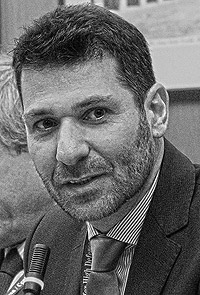 In my role as Executive Director of the ReaCT Observatory, I am honoured to introduce #ReaCT2021, the 2nd Report on Radicalisation and Counter-Terrorism in Europe.
In my role as Executive Director of the ReaCT Observatory, I am honoured to introduce #ReaCT2021, the 2nd Report on Radicalisation and Counter-Terrorism in Europe.
This report offers a concise analysis on the evolution of radical ideologies and terrorist threats in accordance with the European Union directive 2017/541 on the fight against terrorism and is meant as a useful contribution, within the wider public debate, to the harmonisation of member States’ discrepancies around what should be defined and treated as terrorism.
The Observatory mainly focuses on jihadism; however, we make sure to afford enough room and support for studies on other forms of terrorism, ideological radicalisation and social deviance, as well as “conspiracy theories” leading to violent outcomes.
In their assessments, the authors who submitted their work for this issue of #ReaCT2021 took into account the repercussions of new social and conflict dynamics brought about by COVID-19.
Due to other priorities, the pandemic seemed to have sidelined terrorism when, all of a sudden, October 2020 revived the threat which had apparently been overcome. From early September to early November, a successive chain of events clearly highlighted a dramatic and articulated scenario. Those sixty days of fear tell us that terrorism is now a “normal” rather than an ‘exceptional’ phenomenon, as an instrument of the ongoing conflict.
2019-2020: the evolution of European jihadist terrorism
In 2019 according to Europol there were 119 successful, failed or thwarted attacks: 56 of these were carried out by ethno-nationalist and separatist groups; 26 by extreme left radical and anarchist groups; 6 by far right groups; 24 were jihadist, of which 3 were successful and 4 unsuccessful. In the same year, START InSight’s database listed 19 jihadist actions / events (as compared to the 7 reported by Europol); in 2020, the number goes up to 25.
In 2019, jihadists were responsible for all deaths from terrorism in Europe: according to Europol, 10 people lost their lives and 26 were injured (1 person was injured in a far-right attack). START InSight recorded a higher number of people with injuries (48), who were mostly victims of marginal and emulative attacks. In 2020 there was a significant increase in deaths: 16 people were killed and 55 were injured.
The long wave of terrorism which hit Europe following the emergence of the “Islamic State” phenomenon recorded 146 jihadist attacks from 2014 to 2020: 188 terrorists took part in these attacks (59 among them died in action); 406 people lost their lives; 2,421 were injured (START InSight’s database).
Cases of recidivism are on the rise: 3 out of 10 in 2020. START InSight also spotted an increase in actions carried out by terrorists already known to European police forces or intelligence services: 54% of the total in 2020.
An increase in the number of irregular migrants heightens the potential risk of terrorism: 20% of terrorists are irregular immigrants. In France, the number of irregular immigrants involved in terrorist attacks is growing. Until 2017, no attack had seen the participation of irregular immigrants; in 2018, 15% of terrorists were irregular immigrants: in 2020, they reached 40%.
Islamic State and al-Qaeda online terrorist propaganda during the Covid-19 emergency
Propaganda activities carried out during the Covid-19 pandemic and the attacks which took place in Paris, Nice and Vienna, recall how dynamic terrorism associated with the Islamic State and al-Qaeda remains, especially through the Internet. In particular, the Islamic State confirmed its aggressive narrative, identifying the Coronavirus as a “soldier of Allah”. An ally, set out to punish the “infidels”, above all the military and police forces.
The concepts and importance of preventing and countering violent extremism (PVE/CVE)
PVE and CVE gradually became an integral part of the global counter-terrorism architecture. In order to be long-term and effective, these policies and projects require a constant dialogue among researchers, practitioners, law enforcement agencies and legislators which also sets out priorities and expectations. Measuring the results of these activities remains a difficult task but several European think tanks are already bent on the issue.
Countering radicalisation and terrorism via criminal law: problems and perspectives
By its very nature, counterterrorism criminal law does not affect the causes of radicalisation and terrorism. An overarching and disproportionate resort to criminal law may even produce crime-inducing side effects: radicalisation shall be addressed as a reversible process. Counterterrorism criminal law in Europe is generally prison-based, even with regard to facts that arguably do not harm legal goods or interests.
The terror threat in the UK. The challenge: identify, define, arrest and convict
The complexity of the terror threat picture faced by the UK was recently highlighted through court cases which have frustrated the efforts of the security and intelligence forces. The cases that are now emerging are so disconnected from terrorist networks, are planning such random acts and the tools of terrorism are becoming so banal that it has become almost impossible to entirely shield yourself from the threat. But it has also become almost impossible to prove who might be going in this direction. This is creating a new generation of radicals that authorities struggle to identify, define, arrest and convict.
A look at the Balkan gate to Europe
The attack which took place in Vienna in November 2020 drew attention to the issue of terrorism in Europe, especially in the Balkan Area. It also focused such attention on jihadist presence in the Balkan countries, which could become a potential logistical hub for jihadism towards Europe.
Lessons learned from Kosovo’s experience in repatriating former foreign fighters: the small Western Balkan nation of Kosovo repatriated 110 citizens, including men, women, and children, in April 2019, making it one of a very small number of countries that has actively repatriated citizens involved with the Islamic State. The paper also includes what lessons can be learned by EU countries in handling the complex issue of how to manage the return of foreign fighters and their families.
The other terrorisms: far-right, extreme left and the new QAnon phenomenon in pandemic times
The pandemic caused by the Covid-19 virus has also had significant effects on the relational and communicative strategies and methodologies typical of both far-right and extreme left-wing environments. Right-wing violent extremism, a phenomenon in expansion in the West, appears to be acquiring a transnational character and has an emerging symbiotic, mutually-reinforcing interdependent relationship with Islamist extremism. This interdependence poses additional threats to European security.
A threat to democracy is QAnon, a conspiracy theory movement active in more than 70 countries and that presents a high risk of radicalization in Europe. It should be closely monitored because of its potential for violent actions.
Thanks to all of the authors who contributed to this Report. My gratitude also goes to the two co-editors who have given their fundamental input: Chiara Sulmoni, President of START InSight, and Flavia Giacobbe, Director of Airpress and Formiche.
Claudio Bertolotti – Executive Director
FULL REPORT AVAILABLE HERE (ITA/ENG LANGUAGE)
REPORT INDEX
#ReaCT2021 – Right-wing Violent Extremism, Its Transnational Character, and Its Interdependent relations with Islamist Extremism
by Mattia Caniglia, World Terror Watch Director at the European Strategic Intelligence and Security Center
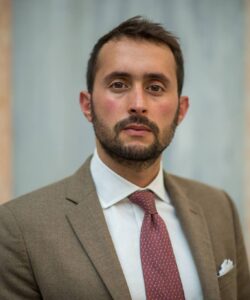 In February 2020, the city of Hanau, in Germany was hit by a right-wing violent extremist attack. This episode was the latest in a string of right-wing politically-motivated incidents which, by their common characteristics and modus operandi, confirm a worrying trend: the surge of right-wing violent extremism in Europe.
In February 2020, the city of Hanau, in Germany was hit by a right-wing violent extremist attack. This episode was the latest in a string of right-wing politically-motivated incidents which, by their common characteristics and modus operandi, confirm a worrying trend: the surge of right-wing violent extremism in Europe.
This rise is, however, a global phenomenon. Right-wing violent extremism is increasingly acquiring a transnational character, and it appears to have an emerging symbiotic, mutually-reinforcing interdependent relationship with Islamist extremism. The combination of these two trends could pose additional challenges to European security.
Similarities with Jihadist terrorism
As it grows into a transnational challenge, right-wing violent extremism appears to be imitating the tactics, techniques, narratives, and procedures of groups like Al-Qaeda and the Islamic State.
Right-wing extremist groups are increasingly forming global networks much as jihadist did in the years leading to 9/11; their propaganda warning of an alleged “great replacement” of “whites”, mirrors the jihadist narrative of an alleged war against Islam; they promote violence as an appropriate means to defend the purity of the “white race” – just as jihadists use and promote violence to protect the purity of “Islam”.
Both right-wing and Islamist extremists recruit followers and reinforce their messages through intense use of social media and messaging applications. While jihadists disseminate martyrdom videos, right-wing terrorists post online manifestos and often live-stream their attacks. The videos, live streaming and manifestos serve the same objectives and propaganda aims: to deliver an explanatory narrative, an ideological justification, a tactical lesson, and an inspiration/call to arms for future attackers while idolatrizing the memory of those who succeeded in committing attacks.
Further similarities exist in their approach to recruitment, financing, and propaganda, and as jihadist travel to fight in places like Syria and Afghanistan, right-wing extremists too have their own theatres where they gain combat experience. Ukraine emerged as a hub in the broader network of transnational right-wing extremism, attracting foreign recruits from all over the world. More than 17,000 people from 50 countries have travelled to fight in Eastern Ukraine contributing to both Ukrainian nationalist and pro-Russian separatist sides, some of them using the experience in the conflict as a training ground for further action in Europe and the US, while at the same time strengthening transnational links.
A worrying interdependent relation
Historically, three main analogies occur between jihadism and the right-wing extremism: a binary vision of the world, a particular balance between revolution and conservatism, and the cult of heroism. Building on these clear similarities, an increasingly crucial mechanism of reciprocal strengthening and a mutually-reinforcing interdependent relationship has come to existence.
Right-wing extremists portray jihadists and radical Islamists as representatives of the whole Muslim community, whereas jihadists and radical Islamists portray right-wing extremists as representative of the entire West, and every time the “enemy” engages in a terror attack, their respective narratives and ideologies are confirmed and strengthened in what could be defined as a ‘loop dynamic’.
In the aftermath of the recent jihadist attacks in France and Austria, many far-right extremists’ groups active on messaging applications, social media and other online platforms were particularly active in sharing messages of hate towards the Muslim community, even calling for “revenge actions”. This is a phenomenon that has already been observed before; for instance, the Christchurch attack triggered a reaction in official and non-official IS and Al-Qaeda media, with thousands of communications calling for retaliatory attacks against the “Crusaders”.
This ‘loop dynamic’, powered by media, social media and propaganda means, has two main effects. It has the potential to increase the effectiveness of extremists’ recruitment strategies and therefore expand the number of radicalized individuals ready to act in the name of one side or another. Secondly, it contributes to creating a vicious circle of violence and polarisation that inflames already tense social conflicts and that could in turn “accelerate” the political destabilisation of European countries.
The ‘loop’ increases polarisation by leveraging on a process of ‘othering’, historically adopted by both right-wing and jihadist extremism. The ‘othering’ maximises the dichotomisation effect of an “us versus them” discourse, empowering the narratives of both groups and allowing them to achieve one the main effects sought in terrorist acts: to divide society.
In 2020 both right-wing violent extremist and jihadist attacks in Europe have proven particularly effective at this aim, generating polarization loops, which – amplified by media, social media and other channels of communications –- ultimately deepened tensions within the countries targeted and on a global scale.
In the context of European countries already torn by the COVID-19 crisis and its downturns, where differences in religion, ethnicity, culture, social condition become more divisive, terrorism finds the perfect ground to exploit this ‘loop dynamic’ and deepen social divides. Along these fissures, the space for radicalization processes and violent acts expands, to the point that radicalization risks to become ‘mainstream’.
Recent data from the Global Terrorism Index 2020 confirm this risk, linking the rise of right-wing violent extremism in the West with the rise of political violence and the decline on specific indicators related to the fractionalisation of elites, the existence of group grievances, and hostility towards foreigners. As and if radicalisation and polarisation become mainstream, they could have an unprecedented power to challenge the political stability of many European countries by undermining their cohesion.
Risks for European Security
Perfected techniques of radicalisation online – now increasingly similar in right-wing and Islamist extremism – coupled with the effects of the interdependence between the two phenomena, could drastically reduce timespans of radicalisation, and shorten attacks cycles making it more challenging for security forces to intercept and prevent terrorist acts.
At the same time, the mechanism of reciprocal strengthening between the two groups and their augmented polarising effects on already divided societies might result in a higher number of “Gefährder”, individuals highly likely to commit a politically motivated crime of considerable significance, possibly overstretching security resources. In this context, to assess future threats it will be necessary to monitor different forms of radicalism and improve our awareness of how right-wing violent extremism and jihadism influence and feed off each other.
In the past, right-wing violent extremism was largely disorganised, with most of the individuals carrying out attacks unaffiliated with specific terrorist groups, and broadly indicative of a mood of political alienation and discontent. However, there is no guarantee that this violence will remain unorganised. If the polarisation processes currently ongoing in our societies, and legitimised by a certain political discourse, continue unchecked over the coming years, the likelihood of an intensification in organised right-wing extremist violence could increase significantly, especially considering the phenomenon’s current shift towards transnationalism.
#ReaCT2021: 2nd Report on Radicalization and Counter-Terrorism
 In my role as Executive Director of the ReaCT Observatory, I am honoured to introduce #ReaCT2021, the 2nd Report on Radicalisation and Counter-Terrorism in Europe.
In my role as Executive Director of the ReaCT Observatory, I am honoured to introduce #ReaCT2021, the 2nd Report on Radicalisation and Counter-Terrorism in Europe.
This report offers a concise analysis on the evolution of radical ideologies and terrorist threats in accordance with the European Union directive 2017/541 on the fight against terrorism and is meant as a useful contribution, within the wider public debate, to the harmonisation of member States’ discrepancies around what should be defined and treated as terrorism.
The Observatory mainly focuses on jihadism; however, we make sure to afford enough room and support for studies on other forms of terrorism, ideological radicalisation and social deviance, as well as “conspiracy theories” leading to violent outcomes.
In their assessments, the authors who submitted their work for this issue of #ReaCT2021 took into account the repercussions of new social and conflict dynamics brought about by COVID-19.
Due to other priorities, the pandemic seemed to have sidelined terrorism when, all of a sudden, October 2020 revived the threat which had apparently been overcome. From early September to early November, a successive chain of events clearly highlighted a dramatic and articulated scenario. Those sixty days of fear tell us that terrorism is now a “normal” rather than an ‘exceptional’ phenomenon, as an instrument of the ongoing conflict.
2019-2020: the evolution of European jihadist terrorism
In 2019 according to Europol there were 119 successful, failed or thwarted attacks: 56 of these were carried out by ethno-nationalist and separatist groups; 26 by extreme left radical and anarchist groups; 6 by far right groups; 24 were jihadist, of which 3 were successful and 4 unsuccessful. In the same year, START InSight’s database listed 19 jihadist actions / events (as compared to the 7 reported by Europol); in 2020, the number goes up to 25.
In 2019, jihadists were responsible for all deaths from terrorism in Europe: according to Europol, 10 people lost their lives and 26 were injured (1 person was injured in a far-right attack). START InSight recorded a higher number of people with injuries (48), who were mostly victims of marginal and emulative attacks. In 2020 there was a significant increase in deaths: 16 people were killed and 55 were injured.
The long wave of terrorism which hit Europe following the emergence of the “Islamic State” phenomenon recorded 146 jihadist attacks from 2014 to 2020: 188 terrorists took part in these attacks (59 among them died in action); 406 people lost their lives; 2,421 were injured (START InSight’s database).
Cases of recidivism are on the rise: 3 out of 10 in 2020. START InSight also spotted an increase in actions carried out by terrorists already known to European police forces or intelligence services: 54% of the total in 2020.
An increase in the number of irregular migrants heightens the potential risk of terrorism: 20% of terrorists are irregular immigrants. In France, the number of irregular immigrants involved in terrorist attacks is growing. Until 2017, no attack had seen the participation of irregular immigrants; in 2018, 15% of terrorists were irregular immigrants: in 2020, they reached 40%.
Islamic State and al-Qaeda online terrorist propaganda during the Covid-19 emergency
Propaganda activities carried out during the Covid-19 pandemic and the attacks which took place in Paris, Nice and Vienna, recall how dynamic terrorism associated with the Islamic State and al-Qaeda remains, especially through the Internet. In particular, the Islamic State confirmed its aggressive narrative, identifying the Coronavirus as a “soldier of Allah”. An ally, set out to punish the “infidels”, above all the military and police forces.
The concepts and importance of preventing and countering violent extremism (PVE/CVE)
PVE and CVE gradually became an integral part of the global counter-terrorism architecture. In order to be long-term and effective, these policies and projects require a constant dialogue among researchers, practitioners, law enforcement agencies and legislators which also sets out priorities and expectations. Measuring the results of these activities remains a difficult task but several European think tanks are already bent on the issue.
Countering radicalisation and terrorism via criminal law: problems and perspectives
By its very nature, counterterrorism criminal law does not affect the causes of radicalisation and terrorism. An overarching and disproportionate resort to criminal law may even produce crime-inducing side effects: radicalisation shall be addressed as a reversible process. Counterterrorism criminal law in Europe is generally prison-based, even with regard to facts that arguably do not harm legal goods or interests.
The terror threat in the UK. The challenge: identify, define, arrest and convict
The complexity of the terror threat picture faced by the UK was recently highlighted through court cases which have frustrated the efforts of the security and intelligence forces. The cases that are now emerging are so disconnected from terrorist networks, are planning such random acts and the tools of terrorism are becoming so banal that it has become almost impossible to entirely shield yourself from the threat. But it has also become almost impossible to prove who might be going in this direction. This is creating a new generation of radicals that authorities struggle to identify, define, arrest and convict.
A look at the Balkan gate to Europe
The attack which took place in Vienna in November 2020 drew attention to the issue of terrorism in Europe, especially in the Balkan Area. It also focused such attention on jihadist presence in the Balkan countries, which could become a potential logistical hub for jihadism towards Europe.
Lessons learned from Kosovo’s experience in repatriating former foreign fighters: the small Western Balkan nation of Kosovo repatriated 110 citizens, including men, women, and children, in April 2019, making it one of a very small number of countries that has actively repatriated citizens involved with the Islamic State. The paper also includes what lessons can be learned by EU countries in handling the complex issue of how to manage the return of foreign fighters and their families.
The other terrorisms: far-right, extreme left and the new QAnon phenomenon in pandemic times
The pandemic caused by the Covid-19 virus has also had significant effects on the relational and communicative strategies and methodologies typical of both far-right and extreme left-wing environments. Right-wing violent extremism, a phenomenon in expansion in the West, appears to be acquiring a transnational character and has an emerging symbiotic, mutually-reinforcing interdependent relationship with Islamist extremism. This interdependence poses additional threats to European security.
A threat to democracy is QAnon, a conspiracy theory movement active in more than 70 countries and that presents a high risk of radicalization in Europe. It should be closely monitored because of its potential for violent actions.
Thanks to all of the authors who contributed to this Report. My gratitude also goes to the two co-editors who have given their fundamental input: Chiara Sulmoni, President of START InSight, and Flavia Giacobbe, Director of Airpress and Formiche.
Claudio Bertolotti – Executive Director
REPORT INDEX
FULL REPORT AVAILABLE HERE (ITA/ENG LANGUAGE)
Conspiracy theories: a clear and present danger to national security and global stability?
by Andrea Molle
Download the full analysis in pdf
The influence of conspiracy theories on politics presents serious threats to national security and the international relations system’s stability. The trend is of several populist movements picking up conspiratorial contents to gain political support in exchange for positions of power being occupied by supporters of conspiracy theories. Moreover, the growing presence in the public administration (civil and military) of followers of conspiracy theories poses a clear danger to governance in the West.
Conspiracy theories pose a national security threat due to the ease with which they appear to have infiltrated Western political systems, in addition to the growing links with the world of neo-Nazi movements and their potential to fuel a new season of cell-based terrorism. Right now, America is at the front line of this phenomenon, with the penetration of conspiracy theories into the political agenda almost taken for granted by analysts. A striking example is Rep. Marjorie Taylor Greene, born in 1974, recently elected with 74.7% of the state of Georgia’s preferences. A state that was once a Republican stronghold but recently handed the presidential elections and control of the Senate to Mr. Biden and the Democratic party. Known for having supported numerous far-right conspiracy theories and expressed racist, anti-Semitic, and Islamophobic views, Green is today under scrutiny for publicly endorsing a social media campaign to arrest and execute Democratic leaders accused of treason. Green, and a few other representatives supported by the alt-right, is a member of a so-called “conspiracy caucus” that has become a key player in the new reality of political competition, characterized by the normalization of extremist groups and post-factual ideologies. These politicians are involved in congressional committees and, in some cases, occupy important positions in various government agencies.
Conspiracy theories and American Politic
The “conspiracy caucus” is an informal political group with few affiliated in Congress, some accused of having facilitated the events of January 6, 2021. However, its real numbers and extension at the local level and in the country’s bureaucratic and military apparatus are still unclear. The same leaders of the Republican Party admit today that the State level impact of conspiracy theories, which in some cases incorporate elements of neo-Nazism, is now endemic. It is challenging to pinpoint a precise point in time when supporters of conspiracy theories began to infiltrate American politics and the public administration. It certainly did not evolve to the current extent in a few months. Nevertheless, the political expansion of conspiracy theories was relatively fast. There have always been people fascinated by the idea of a conspiracy in the population and some isolated political personality who has embraced some of its elements. However, the mainstream parties have always distanced themselves from this world. The only notable exception was a small political party known as the “American Party.” This movement was founded in New York in 1843, initially assuming the name of the “American Republican Party” and then spread to other states as the “Native American Party” (but only the descendants of the white British colonists were considered natives). It finally entered the national political competition in 1855, under the name of “American Party,” and dissolve only five years later, in 1860. It was a self-styled “nativist” party, which would nowadays be called a “sovranist” movement. It drew consensus from the widespread idea that America was about to capitulate to a cabal controlled by the Pope who, through massive immigration of Catholics, wanted to replace the country’s “native” population with individuals hostile to the values of white and Protestant America. The party was soon known to the public as know nothing due to its semi-secret organizational structure and the fact that when a member was to be asked about its activities, it instructed to reply only with “I do not know anything.”
Alt-right between the US and Europe
The sobering reality of a major political movement such as the Republican Party being infiltrated by followers of conspiracy theories to the point of them being able to secure leadership positions is indeed alarming. This trend, now international, forerun by the transnational Alt-right movement started by media outlets such as InfoWars, launched in 1999 by Alex Jones, started approximately in 2009, following the last Great Recession (2007/08), and with the birth of the Tea Party movement. However, it is with the presidential elections of 2016 that conspiracy theories began to assume a prominent role in American and European social and political life, reaching a point that today is perhaps one of no return. As happened in Trump’s America, some European political leaders and heads of state and government, expressions of right-wing extremist movements, have taken advantage of the electoral boost given by conspiracies’ normalization. These movements do not seem to have hesitated, nor do they hesitate today, to draw on conspiracy themes by leveraging the population’s irrationality and fears. The high marginal utility of conspiracy is rapidly bringing the political positions of the sovranist right closer to those of extremist neo-nazi movements, paving the way for them to acquire more powerful positions within the continental party systems. Potentially, this could lead some RWE leaders to hold institutional positions, both nationally and in the European Union, in a way not dissimilar to what happened in just over twenty years in the US. Marjorie Taylor Greene and the many unknown bureaucrats now have significant power to influence critical political and military decisions and international relations’ stability. With them in power, the risk of witnessing an increase in policy-making based on non-factual premises is exceptionally high today. Suppose more extreme individuals would increasingly occupy position of power. In that case, there is a clear and imminent danger of collusion with hostile powers that are interested in destabilizing Western governments, which can result in more and more actions of political sabotage or even false flag operations.
Conclusions
Unfortunately, the extent of the infiltration or the amount of damage done so far is unknown. Nevertheless, it is necessary to act promptly and intervene in the most effective ways to prevent further consequences. It is recommended to start investigating the presence of supporters of conspiracy theories at all levels of the public administration and promoting regulatory reforms to protect the independence of politics from these groups and individuals.
Download the full analysis in pdf
QAnon: the new global threat?
by Andrea Molle
Scholars and analysts typically look at conspiracy theories focusing on their conduciveness to fake news and the adverse effects on the electoral process. However, the attention should now increasingly be switched to assessing their security implications, especially in the case of QAnon.
QAnon has been able to exploit mechanisms of “gamification” and “customization,” typical of some ARG (Alternate Reality Games) and open-world videogames to spread. Mainly exploiting existing social networks, the movement has had repercussions in real life and inspired violent actions, which have dramatically increased its appeal, just as in LARP (live-action role-playing game) groups.
Violence associated with QAnon should be analyzed and challenged in the same manner as religious terrorism and deviant cults to which the group shares the following traits:
- First, QAnon is structured as theology, which has gradually become a paradigm through which adherents perceive and interpret reality in a distorted fashion. In social psychology, this effect is known as apophenia, or the recognition of patterns and logical connections in random and nonsensical data.
- Secondly, QAnon has a prophetic, eschatological worldview. It can be summarized in the idea that the world is experiencing the final stages of a cosmic war between Good and Evil. Any failure of such a prophetic framework, like Trump’s political demise, will not result in the end of the movement. Indeed, there are safeguard mechanisms that are activated to contain the damage and ensure that group members engage in acts of rationalization, often ritualistic and in some cases involving violence, to assure the survival of the movement.
- Thirdly, QAnon is an all-inclusive experience, whereas affiliates are embedded in a social bubble, made up of people with substantially homogeneous opinions. This process facilitates a dynamic that in sociology is defined as “social encapsulation,” the isolation of the subject from external influences that could compromise his socialization and loyalty to the group. Followers of QAnon also display an alarming and growing level of hyper-aggression in interpersonal interactions.
- Finally, social characteristics such as lower culture, a tendency to irrational thinking, right-wing extremist political views, religious extremism, young age, or economic instability make people on average more attracted to QAnon. However, none of these traits allow us to define an ideal recruiting profile. In fact, like a cult, QAnon is not a phenomenon that exclusively impacts specific demographics. Additionally, individuals can be involved in the movement harmless ways, such as simple disseminators of information or “researchers” or, in the most severe cases, as zealot “militiamen” who end up getting involved in criminal and violent acts.
The political use of QAnon is extremely worrisome. In the USA, where QAnon now operates in a network of several white supremacist groups, the so-called “conspiracy caucus” is a fundamental political actor of what we can call the Trumpverse. In Europe, QAnon has not yet reached momentum and the complexities shown in the United States. As of today, the European QAnon community essentially deals with three issues:
- the American presidential elections;
- the COVID-19 pandemic;
- the fight against the European Union.
In all instances, followers consider them intertwined elements of the same international plot hatched by the Deep State’s satanic-pedophile cabal.
It is evident in the analysis of the social media presence of QAnon that followers show growing interest toward political extremists, particularly in the sovranist right. For the time being, no European political party seems to be infiltrated by QAnon, as has instead happened in the USA. However, isolated political actors such as Orban, the Hungarian premier, seem to favor conspiracy theories in their political action and propaganda. The high marginal utility of conspiracy theories is moving sovranist political positions closer to those of QAnon. The immediate advantage is to attract the voting favors of its followers, but in doing so, paving the way for its members to obtain positions of power within the continental party system, not unlike what happened in the American Republican Party’s case.
In summary, QAnon represents a growing danger to Europe. The followers of Q are not just dangerous because of their subversive project. However, above all, they are a threat for the ease with which they multiply, radicalize, and for the all-inclusive and potentially violent ways they pursue their goals, demonstrating a high level of cohesion and drive in the pursuit of their objectives. They are comparable to a religious terrorist movement, and it is necessary to treat QAnon as such.
The terrorist movement of QAnon: its evolution from the Pizzagate to the assault on Capitol Hill
by Andrea Molle
January 6, 2021, will always be remembered as the day the US Congress was assaulted by a handful of Trump supporters incapable of admitting he lost the presidential election. It was supposed to be a dull session of Congress that should have just certified Joe Biden’s victory. Instead, Capitol Hill was invaded by dozens of protesters whose intention was to find and destroy the electoral college votes in a vain attempt to prevent the inevitable fall of Donald Trump. Despite his constitutional duties, the outgoing President failed to condemn them and the violence that would later cause four victims among the protesters. Instead, he asked them to leave and return home, expressed loved and admiration, and, most importantly, took once again the opportunity to repeat his unfounded claims of voting fraud. In what many analysts already see as the most dangerous constitutional crisis since the Civil War, among the protesters stood the followers of QAnon led by Jake Angeli, the “QAnon Shaman,” a legendary figure of the movement well-known to the authorities and all scholars of conspiracy theories.
What is QAnon, and why does it represent a danger to democracy?
The QAnon brand gathers the followers of the “conspiratorial revelations” of an anonymous internet user: a collective pseudonym named Q. QAnon is an American movement that, thanks to the COVID pandemic -19, has spread in over 70 countries and presents an extremely high risk of radicalization. The origin of QAnon is relatively recent, although conspiracy theories are typical of American society, at least since the Cold War. The need to carefully monitor this movement stems from the fact that its content and recent activities, including the Washington DC events, suggest that QAnon poses an extreme radicalization and public order issue.
When and how was QAnon born?
The origin of QAnon is relatively recent, although the layer of conspiracy theories from which it develops has been a constant in American politics since the Cold War. Officially, QAnon was born between 2016 and 2017 following the American presidential elections, which saw the Republican candidate Donald J. Trump, already identified as a messianic figure by the various conspiracy groups, prevail over the Democratic candidate Hillary Clinton. With Trump’s election, the groups that had supported his electoral campaign have formed his electoral base, which is independent and often in opposition to the traditional base of the Republican Party, and which Trump has continuously referred to for its political battles. Often censored by the mainstream media, these movements ended up gathering under the label of QAnon. Thus, creating the critical mass necessary to structure a whole network equipped with a parallel social media system, such as the well-known platforms 4chan, 8chan, gab .com, Parlor, and Telegram, to spread their theories and recruit new members. Thus, the QAnon brand has become a sort of franchise that gathers all those individuals and groups who refer to Q’s revelations. However, the movement does not have a fully hierarchical organization.
Who is Q, and what do QAnon followers believe?
In the beginning, Q introduced himself as a government official, willingly revealing the truth about the alleged “deep state.” His clues, whose interpretation is left to readers, depict the existence of a cabal made up of politicians, entrepreneurs, and actors dedicated to kidnappings, human sacrifices, and satanic cults, to achieve immortality and enslave the masses after the great reset caused by the pandemic. Given that the deep state was fought only by Trump, aided by few allied sovereign leaders, his defeat is now viewed by Q’s followers as proof of the conspiracy’s very existence. For this reason, the followers of QAnon are now active supporters of the theory of electoral fraud and, as we have seen, do not hesitate to engage in violent retaliation.

How is QAnon content built?
In addition to the aforementioned core belief of QAnon, each user or “truth search group” can add or modify content and adapt the message to their needs, as shown in the following model.
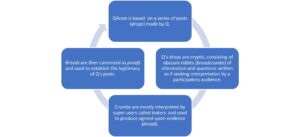
Based on the empirical evidence collected in the last two years, the scientific community that studies conspiracy theories and participatory culture see QAnon in continuity with the New Age phenomenon. QAnon is considered by scholars to be a novelty in the conspiratorial world and is frequently described as a real do-it-yourself, conspiratorial, open-world. The same analysts consider the risk of mass radicalization to be very high, especially among the population’s young and less educated strata. The interactive and very satisfying nature of its conspiratorial contents and the constant references to fictional-political literature make the QAnon experience extremely compelling.
How does QAnon spread, and how does it work?
Although it was born as a marginal phenomenon, QAnon quickly took hold of social media thanks to its contents flexibility. For example, on YouTube, conservative content creators such as TRU Reporting or SGT Report channel started producing dozens of videos inspired by Q’s clues, instantly garnering hundreds of thousands of views. A few months after Q’s debut, the movement already counted on a vast network of YouTube channels, podcasts, and books devoted to fighting the “deep state.” In addition to that, the inevitable themed gadgets such as flags t-shirts ended up becoming fashionable even among those not affiliated. QAnon slogans and symbols, such as the hashtag # WWG1WGA (“Where We Go One We Go All”), also begun to populate the ecosystem of social media and conservative movements. They also appeared in daily life and demonstrations supporting President Trump, who generally opposed the liberal political world. Simultaneously, the QAnon phenomenon began to manifest its most extreme and radical side, taking advantage of some of its followers’ self-radicalization. As early as 2017, with the famous Pizza Gate, which saw a gunman raid the Comet Ping Pong Pizzeria in Washington, DC, claiming to be on a mission to free the children held hostage in the basement, several QAnon affiliates have been implicated in facts of crime. It is estimated that in May 2020, as many as eleven murders, two armed assaults, two kidnapping cases, and two arson attacks against a family planning center, which offers pregnancy interruptions, and a mosque are attributable to members of QAnon. The growing number of cases has resulted in the designation of QAnon as an extremist organization and a potential internal terrorist threat by the FBI. It is the first conspiracy theory to be classified as such. However, the lack of a defined and structured organization with identifiable leaders made it very difficult for the American authorities to prosecute QAnon affiliates.
In many cases, these individuals adhere to its message and exploit the ideology but operate independently. For example, in this case of the Nashville attack, the attacker was motivated by an opposition to 5G technology and the SARS-COV-2 vaccine, which he considered government tools for controlling the masses. In others, the movement is presented in a more structured way, as showed by the assault at Capitol Hill.
How widespread is QAnon?
Speaking of its diffusion, QAnon is present in more than 70 countries with activities ranging from the individuals directly affiliated to occasional reposters of content. The spread of QAnon was undoubtedly helped by the recent COVID-19 pandemic and the constant decrease in institutions’ trust. Whereas goggletrend suggests fluctuating interest, the number of Tweets related to QAnon has increased from 5 million in 2017 to over 12 million in 2020. As for the number of followers, QAnon has now exceeded 1.5 million in the US while estimating around 500,000 affiliates in Europe.
Donald Trump is a critical figure in the conspiracy narrative, and QAnon remains mostly focused on American politics. However, we recently see a boom in Europe where the movement has followers on various social media. NewsGuard, an international organization that assesses news sites’ reliability, recently released an extremely detailed report on QAnon in Europe. In France, a country where the movement has been present for some time, albeit still to a limited extent, QAnon debuted thanks to the “Yellow Vests” movement and is ever since growing thanks to the No-Vax movement. In the UK, QAnon garnered support during the Brexit campaign. Without referring directly to the movement, groups such as Citizens Unite UK #wakeup use QAnon’s ideas, for example, the existence of a global elite, to push British citizens to fight the alleged government’s attacks on their rights. In Germany, the second-largest nation after the United States for QAnon’s presence, the movement entered the political debate through far-right movements and the generalized anti-Merkel sentiment that grew exponentially during the lockdown. Also, several leftist movements, particularly those linked to the climate change narrative, are increasingly attracted to his rhetoric. The number of german accounts associated with QAnon has risen to more than 200,000 according to the most recent estimate by the Amadeu-Antonio Foundation, which monitors right-wing extremism and anti-Semitism in Germany. The largest German-language QAnon channel on Telegram, Qlobal Change, quadrupled its followers in 2020 to an impressive 123,000 scoring over 18 million views for its YouTube content. In the Netherlands, social media accounts openly allied with far-right political movements have similarly borrowed themes typical to QAnon. It mostly happened when the country entered in lockdown because of the COVID-19 pandemic. In Italy, the real size of QAnon is still mostly unknown. However, Q’s propaganda has entered the political debate thanks to the populist and sovranist right that accesses it through various identity movements that openly support it.
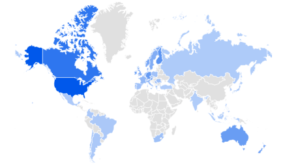
Who joins QAnon, and how to counter it?
As we have seen, QAnon raises severe concerns among analysts because of the speed, ease, and pervasiveness with which it spreads. Furthermore, it has already shown the potential for terrorist violence in America. It is therefore advisable to start monitoring QAnon’s presence on social media in Italy and establish a network of collaborations with public and private institutions that already deal with this phenomenon in Europe and the United States. It is also worrisome that mainstream sovranist movements increasingly amplify the conspiratorial message to mobilize votes without mentioning QAnon. Therefore, it is necessary to analyze the rhetoric and conspiracy themes to reach a level of understanding that makes it possible to detect them in contexts not directly related to QAnon.
We also need to understand the recruitment pathways and radicalization mechanisms. While it seems increasingly likely that the radicalization mechanisms are very similar to those of religious extremist movements, i.e., widespread self-radicalization and the presence of radicalism entrepreneurs, the target is still not entirely clear. The recruitment profile is still unclear where all the population strata are susceptible to a fascination for QAnon. The only exception is political affiliation, which may partly explain the impact of Q’s theories. A recent survey by Morning Consult, conducted between 6 and 8 October 2020 on a sample of 1,000 adults, reveals that around 24% of adult Americans believe the claims made by Q’s supporters are very or partly accurate. However, the same poll shows profound differences between Democrats and Republicans. While only 18% of Democratic voters believe some of the claims are somehow accurate, about 38% of Republican supporters consider them valid. Another survey by Daily Kos / Civiqs, which reports the interviews conducted on approximately 1,368 adults conducted from August 29 to September 1, 2020, confirms the previous findings. The results show that about one in three Republicans (33%) believe QAnon’s theory of a conspiracy about the “deep state” is “mostly true,” while another 23% say that only “some parts” of it are correct.
On the other hand, only 4% of Democrats think that the theory is even partially true, while for 72% of Democrats, it is not true at all. The explanation for the differences is likely because Republican politicians have only sporadically disavowed the claims made by QAnon supporters, potentially because they rely on them for political support. In addition to blind support for Trump, one of the most striking examples is the recent election to Congress of Marjorie Taylor Green, who directly promoted and approved QAnon’s content in interviews and on its social media channels. In Europe, several right-wing sovranist parties have adopted QAnon’s rhetoric ever since the election of Donald Trump and the establishment in Rome of Bannon’s Study Center. Several scholars consider the former advisor to President Donald Trump to be the main responsible for the normalization of conspiracy theories. However, it is still challenging to determine the direction of the correlation effect, namely whether QAnon more easily influences those who manifest right-wing political tendencies or whether the movement’s followers, regardless of their initial political positions, become more inclined to move their vote towards right-wing parties over time.
In the future, the movement will likely require the same approach used today for extreme religious movements. Unfortunately, the lack of a defined organizational structure and the potential for mass radicalization still makes it extremely difficult to offer guidelines and specific policy recommendations.
What is QAnon about, and why is it considered a danger to democracy?
by Andrea Molle
According to journalist Marc Endeweld, French President Emmanuel Macron is dangerously close to the world of conspiracy theories. In particular, he appears to be obsessed with the “Replacement Theory,” an alleged plan to “replace” Europeans with African immigrants. In Italy, ordinary citizens believe that these same theories have breached into mainstream politics. For example, some believe that Matteo Salvini is a sympathizer of conspiracy theories. They have created online groups dedicated to finding evidence that the leader of The League is a follower of QAnon, a US-based movement which, partly due to the lockdown, is becoming increasingly popular in Europe.
There is no evidence confirming such conjectures. However, even the remote possibility of this represents a very concerning scenario. Several extra-parliamentary movements, those same organizations that mobilize identitarian votes for the far-right and the extreme left, have started to pick up and amplify QAnon’s messages and conspiracy theories all over the world. To increase consensus, some of the Italian mainstream parties started relaunching those same contents as part of their outreach efforts, especially on social media. Relaunch often happens accidentally, without a deliberate intent to connect with it, yet conspiracy rhetoric, filled with invisible enemies, international “powers,” and overly simplistic explanations, quickly gains media attention. By doing so, however, these parties take a chance of associating themselves with a perilous movement and underlying political culture.
Conspiracy rhetoric, filled with invisible enemies and overly simplistic explanations, easily gains media attention. Some parties started relaunching the same content as part of their outreach efforts, especially on social media.
Let us try and shed some light on a niche phenomenon that could soon make it to the front pages of national newspapers in Italy and anywhere else in the world. During the 2016 US presidential election, Republican candidate Donald J. Trump was referred to as “the Chosen One” by several conspiracy groups who have since begun to follow him with growing interest and turned him into their Messiah. Following Trump’s victory against Democratic candidate Hillary Clinton, those same groups have increasingly gained visibility and gathered under the label of QAnon. This movement brings together self-styled followers of an anonymous internet user known by the code name of “Q.” In his recent career as a “whistleblower,” Q has claimed to be a high-level member of Trump’s administration and then began to reveal, progressively and through clues that his followers must decipher on their own, the supposed truth about the “Deep state.” The alleged “powers of the Deep State” is a cabal of left-wing politicians, entrepreneurs, and Hollywood personalities who allegedly engage in kidnappings, human sacrifices, and satanic rituals with the ultimate goal of achieving immortality and enslave the world to their will. A cabal that Donald Trump, supported by a few world leaders and allies, is said to be strenuously fighting. At least according to QAnon, Trump is the last hope of humanity. While this idea represents QAnon’s core belief and the nutshell of Q’s revelations, each user or self-styled “truth-seeking group” integrates it with other content, modifying and adapting the message to their needs and cultural or political context. For this reason, the movement is considered by scholars to be radically different from previous or traditional conspiracy theories and to be instead a DYI, conspiratorial “open world.”
Q’s revelations: each user or self-styled “truth-seeking group” integrates them with additional content, modifying and adapting the message to their needs and cultural or political context. For this reason, the movement is considered to be a DYI conspiratorial “open world”.
Although QAnon started as a fringe group deeply rooted in American political reality, it quickly gained visibility on YouTube thanks to its flexibility. Here, producers of conservative content, such as TRU Reporting or SGT Report, have immediately started putting out dozens of videos inspired by Q’s revelations, getting hundreds of thousands of views. At the beginning of 2018, QAnon had already inspired an extensive network of YouTube channels, podcasts, and publications dedicated to the “Deep State.” QAnon slogans and symbols, such as the hashtag #WWG1WGA (“Where We Go One We Go All”), have populated the conservative social media ecosystem and have often made an appearance through President Trump’s supporters’ rallies. Simultaneously, QAnon started to show its darker side, with several of its followers implicated in harassment, vandalism, armed assaults, and even murders. In 2019, the movement’s short but efficient career as an extremist organization culminated in the FBI’s designation of QAnon as a domestic terrorist threat. The first conspiracy theory to be classified as such in the history of the Bureau.
QAnon received a boost during the recent COVID-19 pandemic, which saw a decline of trust in social and political institutions. QAnon is ‘booming’ in Europe, where the movement now has more than 500,000 followers connecting over several dedicated social media platforms.
With nearly 1.5 million followers, QAnon undoubtedly received a boost during the recent COVID-19 pandemic, which accelerated the decline of trust in social and political institutions. The number of QAnon-related Tweets has risen from nearly 5 million in 2017 to over 12 million in 2020. Donald Trump remains a vital character of the conspiracy narrative, and the movement is still primarily focused on the United States. However, we are witnessing a QAnon boom in Europe, where the movement now has more than 500,000 followers who connect over several dedicated social media platforms. In Germany, the second-largest nation after the United States for QAnon presence, the movement is not surprisingly very popular with far-right movements thanks to the anti-Merkel sentiment that grew exponentially during the lockdown. However, it must be mentioned that even several leftist movements, particularly those linked to ecologism and climate change, are increasingly attracted to Q’s rhetoric. In France, the European nation where the movement has been present for a longer time, QAnon has initially penetrated thanks to the Yellow Vests movement. Finally, in the United Kingdom, Q gathered support thanks to the Brexit campaign. As far as Italy is concerned, the real dimension of QAnon remains largely unknown. However, Q’s propaganda has already spread mainly through the populist right that, as we mentioned above, accesses its contents through several identitarian movements that have openly embraced its rhetoric.
In 2019, the movement was designated a domestic terrorist threat by the FBI. The first conspiracy theory to be classified as such in the history of the Bureau.
Party leaders and pundits who relaunch QAnon’s content can effortlessly gain thousands of followers. They can achieve this result by republishing Q’s “drops,” maybe with a few adaptations to the Italian context, for example, while flirting with the NO-MASK or the NO-VAX movements. Alternatively, they can repack the contents giving it a Catholic spin, typically focusing it against the Muslim minority. Finally, they can link them to the umbrella concept of “tradition” as, for example, when claiming to be defending “our children” from pedophiles or the traditional nuclear family against the threat of the “Gender theory.” However, even if they gain an instant payoff, the cost of it can be much higher. When politicians retweet Q’s tropes, or back up outspoken supporters of QAnon, or when they claim the existence of a “Deep State” controlled by a “globalist” élite, they are enabling a criminal organization that is considered by American law enforcement agencies to be a nest of potential terrorists.
Immagine: “QAnon – Q Conspiracy – Deep State Trump” by mikemacmarketing is licensed under CC BY 2.0
Image via www.vpnsrus.com

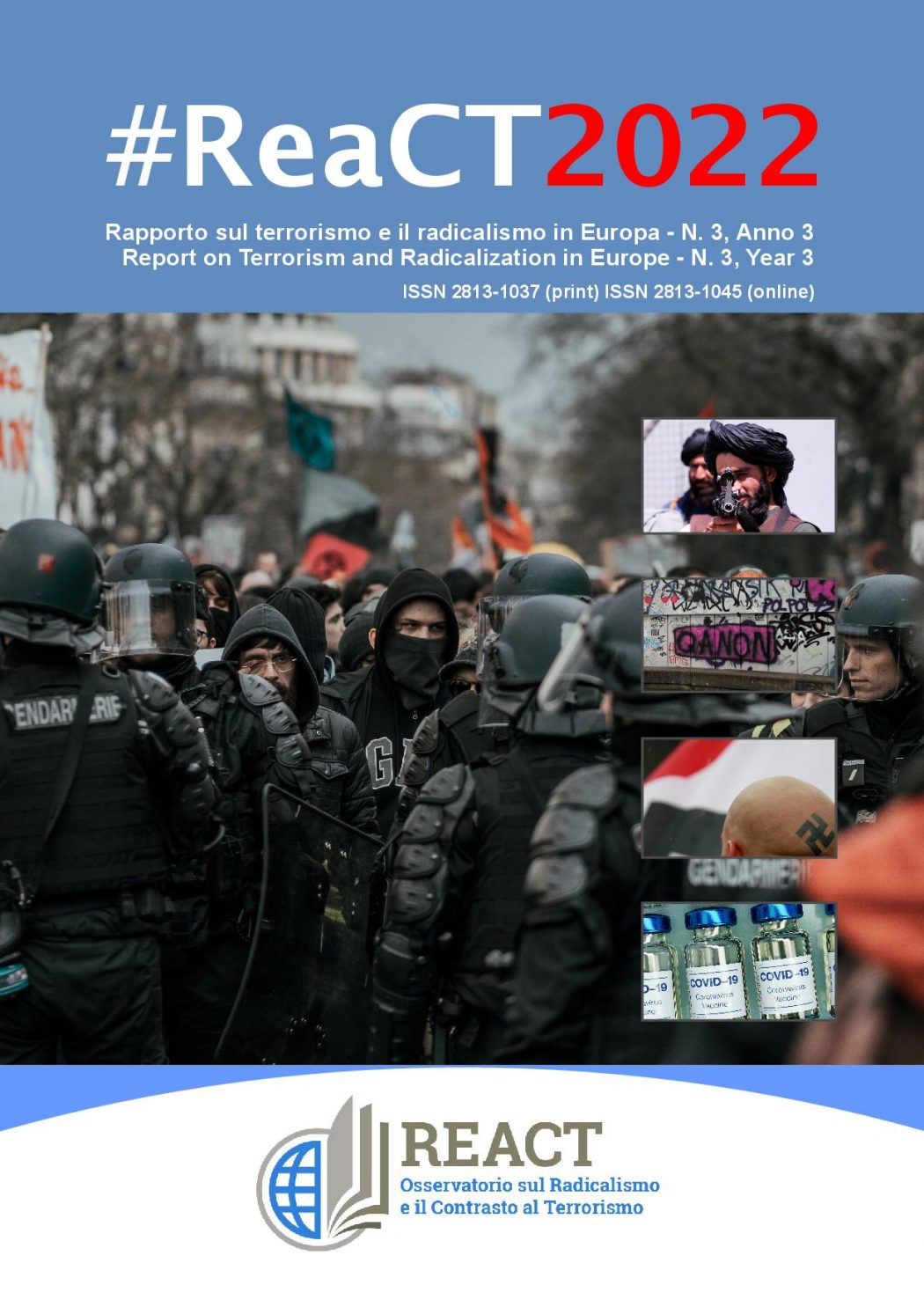
 The pandemic scenario that emerged with the spread of the Covid-19 epidemic has highlighted some challenges, which many companies will face in the coming years.
The pandemic scenario that emerged with the spread of the Covid-19 epidemic has highlighted some challenges, which many companies will face in the coming years. In my role as Executive Director of the ReaCT Observatory, I am honoured to introduce #ReaCT2021,
In my role as Executive Director of the ReaCT Observatory, I am honoured to introduce #ReaCT2021,  In February 2020, the city of Hanau, in Germany was hit by a right-wing violent extremist attack. This episode was the latest in a string of right-wing politically-motivated incidents which, by their common characteristics and modus operandi, confirm a worrying trend: the surge of right-wing violent extremism in Europe.
In February 2020, the city of Hanau, in Germany was hit by a right-wing violent extremist attack. This episode was the latest in a string of right-wing politically-motivated incidents which, by their common characteristics and modus operandi, confirm a worrying trend: the surge of right-wing violent extremism in Europe.












